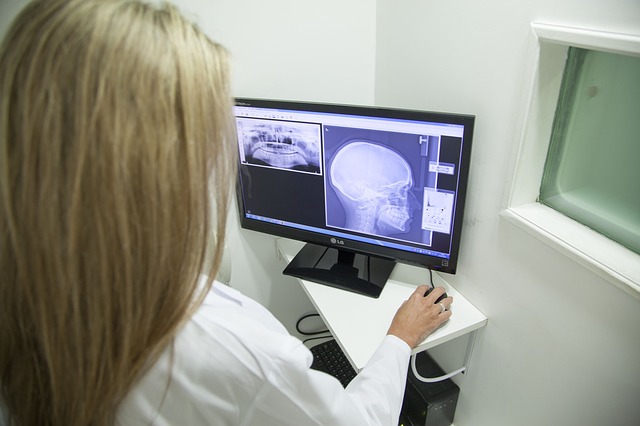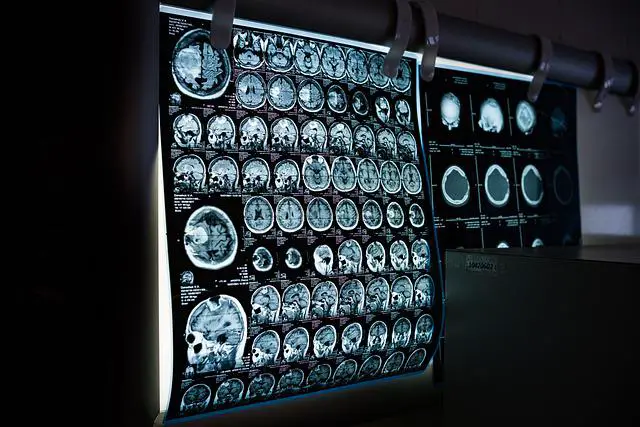
Doctors use X-rays to examine a wide range of ailments today, including fractured bone, pneumonia, heart failure, and many other health problems.
Mammography is the usual screening method for breast cancer and utilizes X-rays. We barely notice it; it’s so common.
However, not long ago, an injured limb or a tumor could not be diagnosed without surgery. The history of X-rays is a remarkable one, and it all started with the invention of the camera.
Who invented the X-ray?
The first person to create an X-ray was a German physicist named Wilhelm Conrad Röntgen. While experimenting with electricity and magnetism in his laboratory, Röntgen noticed that a piece of Crookes tube (a vacuum tube that produces X-rays) was causing a nearby piece of paper to glow.
Röntgen realized that he had discovered something special, but he had no idea what it was. He nicknamed it “X”, since it was an unknown quantity at the time.
Röntgen’s discovery was met with a great deal of skepticism at first. Many people refused to believe that X-rays could penetrate the human body.
Röntgen himself was not sure what the implications of his discovery were.
However, Röntgen’s research soon proved that X-rays could, in fact, pass through the human body. This opened up a whole new field of medicine, and X-rays quickly became an invaluable tool for doctors.
Read also: The history of how the camera was invented and how it was developed
How were the X-rays accidentally discovered?
On November 8, 1895, Wilhelm Conrad Röntgen was investigating cathode rays (electrons) using a Crookes tube covered by black cardboard so that the rays would not escape.
He noticed that a piece of barium platinocyanide next to his tube glowed when he turned on the power, even though it was not in the direct path of the cathode rays.
Röntgen realized that something else was causing the plate to glow and he initially called it “X”, for unknown. He found that X-rays could pass through black cardboard, books, and even human flesh.
Further experimentation showed that bones cast shadows on X-ray plates, while soft tissues showed up in lighter areas.
Röntgen’s discovery was reported in the press and caused a sensation. People were both fascinated and frightened by the idea of invisible rays that could pass through the human body.
Röntgen’s discovery quickly led to the development of X-ray machines that could be used for medical purposes.
Doctors soon found that X-rays could be used to diagnose broken bones, locate tumors, and identify other problems inside the human body.
Read also: The history of how the telegraph was invented
How are X-rays produced?
X-rays are electromagnetic radiation, like visible light, radio waves, and gamma rays. They are all part of the electromagnetic spectrum.
X-rays are produced when electrons collide with a metal target. The resulting X-rays have a range of energies, depending on the energy of the electrons that hit the target.
X-rays are used in a variety of settings, including medical imaging, security screening, and industrial inspection.
What was the first X-ray used for?
The first X-ray was used to diagnose a fractured bone.
In 1896, Röntgen took an X-ray of his wife’s hand, which showed her bones clearly. This was the first time anyone had ever seen the inside of the human body without surgery.
X-rays quickly became popular in the medical community, and they were used to diagnose a variety of ailments. However, it was not until the early 1900s that X-rays began to be used routinely in hospitals.

Read also: The History Of Pandemics That Have Influenced Human Lives
X-Rays Timeline
1895 – Wilhelm Conrad Röntgen discovers X-rays while experimenting with electricity and magnetism.
1896 – First X-ray image of a human body is taken.
1903 – First successful surgery using X-rays is performed.
1914 – First mammogram (X-ray of the breast) is performed.
1920 – First X-ray machine is built specifically for mammograms.
Today, X-rays are an essential tool in medicine. They are used to diagnose a wide variety of ailments, and they have saved countless lives.
How do X-rays work?
X-rays are a type of electromagnetic radiation, like light. They are made up of tiny particles called photons.
When X-rays hit an object, they pass through it. The amount of X-rays that pass through an object depends on the density of the material. For example, X-rays can easily pass through skin and flesh, but they are absorbed by bones and other dense objects.
This property of X-rays makes them very useful for medical purposes. Doctors can use X-rays to create images of the inside of the human body without having to make any incisions.
What are the dangers of X-rays?
While X-rays are very useful, they can also be dangerous. X-rays are a form of ionizing radiation, which means that they can damage the DNA of living cells. This can lead to cancer.
That’s why it’s important for doctors to use X-rays sparingly and only when necessary. Modern X-ray machines are much safer than the early ones, but it’s still important to be careful.
Read also: The History of How DNA Discovered
How have X-rays changed over time?
X-rays have come a long way since Röntgen’s discovery. Today, X-rays are produced by machines called linear accelerators, which are much more powerful than the Crookes tube that Röntgen used.
X-rays are also now used for more than just diagnosis. They can be used to treat cancer and other diseases. Doctors can use high-energy X-rays to kill cancer cells, or they can use lower-energy X-rays to shrink tumors.
X-rays have become an invaluable tool in the fight against disease, and they have saved countless lives. The history of X-rays is a fascinating one, and it all started with a simple experiment in a laboratory.
The bottom line
X-rays are a type of electromagnetic radiation that can pass through the human body. They were discovered by Wilhelm Conrad Röntgen in 1895, and they quickly became an important tool in medicine.
Today, X-rays are used to diagnose and treat a wide variety of ailments. While X-rays can be dangerous, they are essential for many medical procedures.



